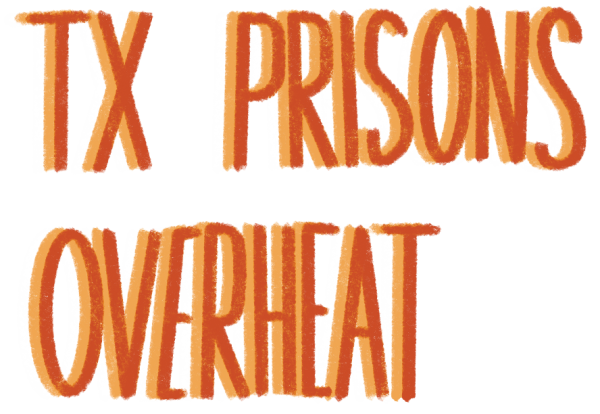Editorial: A Reflection on the Black Lives Matter Movement
September 3, 2020
The #BlackLivesMatter movement originated with a hashtag in 2014, after the acquittal of officer George Zimmerman in the killing of unarmed teenager Trayvon Martin. Its main purpose was to provide a platform to protest the disproportional rates of systemic violence against black men and women in the U.S., but it also acted as a modern liberation movement to validate all black lives. Although previous civil rights movements have ensured fundamental rights for black citizens, such as the right to vote and the desegregation of public facilities and the education system, the current movement is aimed at a much more in-depth, systemic change.
Responsibility does not just belong to the officers who commit acts of violence– we must go further, and look at the criminal justice system whose laws they enforce. Racism has never disappeared, nor has it subsided; it has only changed the way it manifests in society. Just because people are no longer shackled and subjugated to impudent enslavement, doesn’t mean that there aren’t still great disparities in privilege and opportunity for Black communities.
When analyzing the significance and impact of the Black Lives Matter movement nationally we must also consider the United States’ history of devaluing Black Lives, both through policy and social stigma.
From the first day African slaves landed on this continent it was clear their lives were only as valuable as the money they could make their master. Fast forward to the Civil War, the economic and political implications of slavery were the main sources of conflict rather than lack of morality or respect for the lives of the people affected. In the late 19th and early 20th centuries, Jim Crow laws were enforced to erase the gains of Black people that were achieved during Reconstruction and the KKK reemerged in the 1920s. Today, we struggle with mass incarceration of Black men, causing not only a split up of Black families but Black voter suppression as well. It seems that in American history we have been consistently dragging our feet when asked to value Black lives. Every time one obstacle is knocked down another one conveniently pops up.
The American government and public have explicitly and implicitly proved time and time again that Black lives don’t matter to them. By upholding Jim Crow laws and supporting segregation Americans neglected and devalued Black lives. By supporting mass incarceration and turning a blind eye to police brutality America tells it’s Black people that their lives and families don’t matter, and by supporting a racist president, everyday Americans tell their Black friends and neighbors how little they care about them. The Black Lives Matter movement highlights the destructive effects of these injustices and demands change.
The recent call for reform within the justice system culminated in May with the murder of George Floyd, whose name brought the BLM movement permanently into the spotlight. He is one of many who have faced unlawful discrimination and unwarranted violence at the hands of law enforcement. However, unlike many such instances that result in inadequate accountability towards the police, there is no ambiguity or uncertainty in the nature of his death. In a now viral video, Floyd is seen repeating “I can’t breathe,” as Minnesota Officer Derek Chauvin used his knee to press on his neck for 8 minutes and 46 seconds. The clear use of excessive force, especially for such a petty crime as attempting to use a counterfeit dollar bill, has brought on global outrage.
Austin itself has been among the many cities across the world rocked by organized demonstrations in the past few months. And although Austinites have taken to the streets to protest the lives of victims of police brutality across the country, they have also had much to protest in their own city. On April 24th of this year, Mike Ramos, an unarmed black and hispanic man, was cornered by Austin Police Department (APD) officers and shot with a bean bag round while his hands were up. He was then shot and killed after attempting to drive away from the scene. In later demonstrations protesting his death and demanding accountability of the officers responsible, 16-year-old Brad Levi Ayala was shot in the forehead with a rubber bullet, a form of supposedly “non-lethal” weaponry, and put into critical condition.
These are not the only incidents of the police violence and discrimination that plagues Austin’s history– before Mike Ramos, it was David Joseph, a 17 year old black male who was shot unarmed by APD officers responding to a simple neighborhood disturbance call. It was Breaion King, an elementary school teacher pulled over for a speeding ticket who was dragged from her car, slammed to the ground and arrested by Officer Bryan Richter, who in turn received only a reprimand for his unwarranted violence. But to analyze Austin’s history of police violence thoroughly, we must also look back on it’s history of discrimination against it’s black population.
In 1928, the city implemented a policy titled the“Master Plan,” which forcefully relocated Austin’s black population on the Eastern side of the city. This act of city planning facilitates segregation that became even more explicitly defined in 1967 with the placement of the I-35 highway, and still exists today. Since then Austin has become one of the most rapidly growing cities in the country, but at the expense of rapid gentrification on the East side that is pushing out the same black and brown communities put there in 1928. According to a report done by the UT Institute of Urban Policy Research & Analysis in 2014, “the discrepancy between Austin’s huge population growth and its decline in African American residents is greater than that of any other fast-growing major city in the U.S..”’
The current black population in Austin is 7.84%, according to the most up to date American Community Survey (ACS) census– yet the rate of African Americans is grossly overrepresented in 15% of motor vehicle stops and 25% of arrests resulting from stops by the Austin Police Department in 2018, according to a city report done in January of this year. In light of such blatant discrimination within the police department, the APD has taken measures to improve transparency on reports of racial profiling and to work with the community to enforce new policy changes. These changes come on the heels of the recent investigation nicknamed the “Tatum Report,” which raised several allegations of sexism and racism among key leaders within the department and resulted in little accountability among the accused parties. Regardless of their immediate impact, active conversations about bias between community groups and law enforcement are essential in addressing reform and creating forms of accountability on the local level.
The discriminatory treatment of Black Americans throughout history and today have not been by mistake, and sends a message to it’s Black citizens that their lives are secondary to that of their fellow man. The Black Lives Matter movement is a response to that message that challenges the devaluation of black lives and communities. It tells the American public that Black lives do indeed matter, and it’s time to start acting like it.







